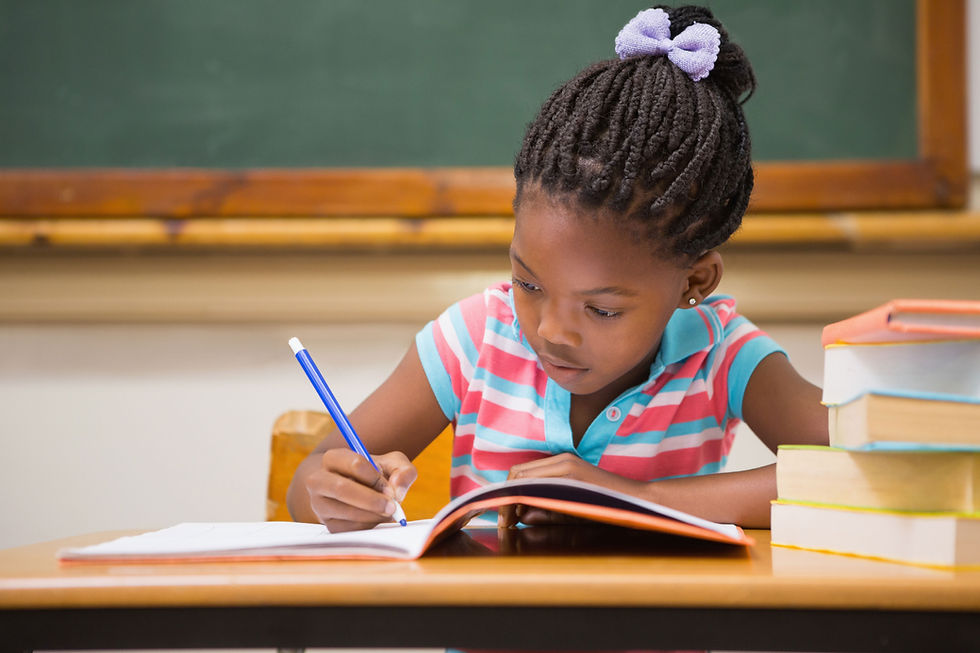Helping Your Child with ADHD: Focusing on Strength-based strategies and Finding What Works
- David Krasky
- Nov 8
- 4 min read

Parenting a child with ADHD can sometimes feel like walking through a maze—just when you think you’ve found the right path, another challenge appears. Yet, with the right mindset and evidence-based strategies, children with ADHD can not only manage their symptoms but also flourish. The key lies in finding what works and focusing on strengths, not just struggles. Attention-Deficit/Hyperactivity Disorder (ADHD) is not a lack of intelligence, motivation, or potential—it’s a difference in how the brain regulates attention, emotion, and behavior. Many children with ADHD are creative, curious, energetic, and full of original ideas. They often thrive in environments that value innovation and flexibility.
Research from positive psychology and educational neuroscience emphasizes that children do best when their strengths are nurtured alongside interventions that address challenges. This “dual approach” builds confidence, resilience, and self-efficacy—three critical ingredients for long-term success.
1. Focus on What Works—Not Just What’s Missing
Instead of starting with what your child can’t do, begin with what they can do well. Identify the conditions under which your child thrives—perhaps they focus better while standing, need frequent movement breaks, or perform best with visual reminders rather than verbal instructions.
Try this:
Keep a brief “Success Journal”—note times your child completes a task, follows directions, or shows persistence. Look for patterns.
Ask your child what helps them concentrate (“Do you think it helps when you listen to music or sit at the kitchen table?”).
When something works—celebrate it! Reinforcing small wins creates momentum and confidence.
2. Build Daily Routines That Support Executive Functioning
Children with ADHD often struggle with organization, time management, and working memory—skills known collectively as executive functions. Routines provide structure and predictability, helping children anticipate what comes next and reducing stress.
Strategies by age:
Preschool–Elementary: Use picture schedules and timers. Break tasks into mini-steps (e.g., “First shoes, then backpack, then snack”).
Middle School: Introduce planners, color-coded folders, and digital reminders. Teach how to estimate time (“How long do you think this will take?”).
High School: Encourage use of digital calendars, task apps, and visual checklists. Help teens learn to prioritize by urgency and importance.
Research Insight: Studies show that external structure (such as visual schedules and consistent routines) significantly improves on-task behavior and reduces parent-child conflict.
3. Leverage Strengths to Compensate for Weaknesses
Children with ADHD often have strong visual-spatial reasoning, problem-solving abilities, and creativity. These can be harnessed to support weaker academic or executive skills.
Examples:
A child who struggles with writing but loves storytelling can use speech-to-text software to “speak” their essays.
A teen who has trouble studying quietly might do better walking while listening to recorded notes.
A child with poor organization might excel when their environment is made visual (e.g., color-coded bins, labeled folders).
4. Promote Self-Regulation Through Movement and Mindfulness
Physical activity improves focus, mood, and working memory—key areas affected by ADHD. Short bursts of exercise before or during tasks can help reset attention and reduce impulsivity.
Try this:
Morning movement: Encourage a quick bike ride, jumping jacks, or yoga before school.
“Brain breaks”: 5–10 minutes of stretching, dancing, or walking every 30–45 minutes of focused work.
Mindful moments: Teach deep breathing or short mindfulness exercises. Apps like Headspace for Kids or Smiling Mind are great options.
Research shows that regular movement breaks and mindfulness training can reduce off-task behavior and improve sustained attention in children with ADHD.
5. Foster Emotional Awareness and Positive Relationships
ADHD can bring emotional ups and downs. Helping children identify and express feelings builds emotional regulation and social skills.
For younger children: Use “feelings charts” and name emotions out loud (“I see you’re frustrated that homework is hard right now”). For older children: Encourage journaling or calm-down routines that include breathing, music, or short walks.
Above all, maintain a warm, positive relationship. A strong parent-child bond acts as a “protective factor,” buffering against stress and improving long-term outcomes.
6. Collaborate with Teachers and Build a Support Network
ADHD is best supported through collaboration. Work closely with teachers, counselors, and healthcare providers to create consistent expectations and supports at school and home.
Ask educators:
What classroom strategies help my child focus or stay organized?
How can we reinforce these at home?
Are there accommodations (like extended time, movement breaks, or visual reminders) that could support success?
When school and home strategies align, children experience less confusion and greater consistency.
7. Teach Self-Advocacy and Growth Mindset
As children grow, help them understand ADHD as part of their unique learning profile—not a flaw. Encourage self-reflection (“What helps you focus?” “What gets in your way?”).
Celebrate effort over perfection, and frame mistakes as learning opportunities.
Sample parent script:
“Having ADHD means your brain works differently—it’s really good at seeing possibilities and solving problems in creative ways. Let’s figure out how to make that work for you.”
Final Thoughts: Finding What Works—Together
Every child with ADHD is different. What works beautifully for one may fall flat for another—and that’s okay. The goal isn’t to “fix” ADHD, but to understand it and adapt environments to help children thrive. When parents focus on strengths, build consistent supports, and approach challenges with flexibility and compassion, children with ADHD learn not only how to cope—but how to flourish.
Resources for Parents
CHADD (Children and Adults with ADHD) – www.chadd.org
Understood.org – Practical tools and videos for parents
The Whole-Brain Child by Daniel Siegel & Tina Payne Bryson
Smart but Scattered by Peg Dawson & Richard Guare
David Krasky is a licensed school psychologist and author of Raising Future Adults, which is available now on all online retailers




Comments